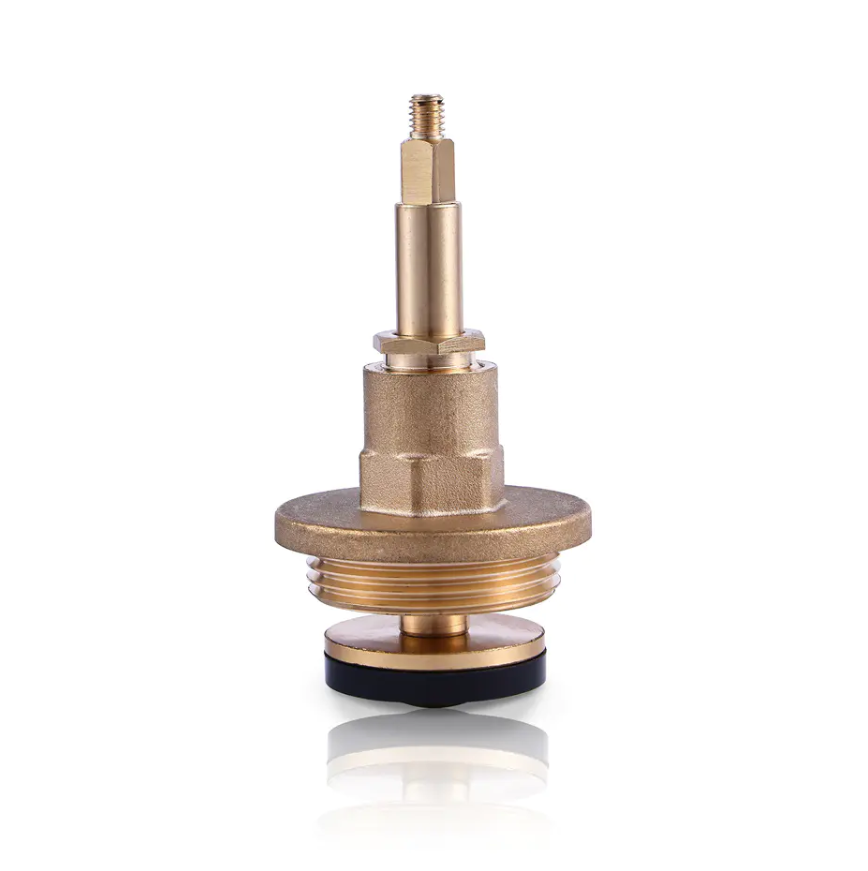Key Performance and Material Differences Between Brass and Stainless Steel Faucet Valve Cores

When choosing a faucet for residential or commercial use, many users focus on external design, but the true performance of a faucet is determined by its internal components, especially the valve core. The two most common materials used for valve cores today are brass (or copper alloy) and stainless steel. While both materials are durable and widely accepted, they have distinct properties that affect how the faucet performs over time. Understanding the differences between a Copper Faucet Valve Core and a stainless steel one can help consumers make more informed purchasing decisions.
Material Composition and Corrosion Resistance
Brass valve cores, commonly referred to as copper-based due to their copper and zinc composition, offer excellent machinability and natural corrosion resistance. Their surface can develop a protective oxide layer that helps resist mineral deposits and internal scaling, particularly in hard water conditions. Stainless steel cores, on the other hand, rely on chromium content to form a passive film that resists rust. While stainless steel is extremely resistant to corrosion in most environments, prolonged exposure to chlorinated water or salty air may still cause localized corrosion over time.
Durability and Wear Resistance
Both materials are known for their long service life, but their mechanical properties differ slightly. A Copper Faucet Valve Core is generally softer than stainless steel, which makes it easier to machine into precise components. However, this softness also means it may wear more quickly under heavy or high-pressure use. Stainless steel is significantly harder and more scratch-resistant, making it a better option for faucets in commercial settings or those subjected to frequent operation. That said, well-constructed copper-based cores with ceramic disc components can still last for years with minimal maintenance.
Thermal Conductivity and Temperature Stability
One of copper's advantages is its superior thermal conductivity, allowing it to adjust more evenly to rapid temperature changes. This can help minimize internal stress when switching between hot and cold water. Stainless steel, while more heat-resistant overall, does not distribute temperature as evenly and may experience thermal expansion issues if not engineered precisely. This difference is usually minor but can influence long-term sealing performance in extreme environments.
Weight and Installation
Copper-based cores tend to be slightly heavier due to the material density, which may provide a more substantial feel to the faucet. Stainless steel cores are lighter, which can benefit installation in lightweight or compact plumbing setups. Neither material poses significant challenges in installation, but some plumbers prefer copper cores for easier adjustments during maintenance.
Environmental Impact and Recyclability
Both copper and stainless steel are recyclable, but copper alloys have a higher scrap value and are more commonly recycled in plumbing systems. From an environmental perspective, choosing a Copper Faucet Valve Core may contribute slightly more to sustainability, depending on the manufacturing and recycling process.
Cost Considerations
Stainless steel valve cores often cost more to produce due to the difficulty of machining the harder material. However, this can be offset by their longer wear life. Copper-based cores, while more affordable, may need more frequent replacement if subjected to heavy use.
In conclusion, the choice between a Copper Faucet Valve Core and a stainless steel one depends on specific application needs. Copper-based options offer excellent thermal responsiveness, corrosion resistance, and ease of maintenance, making them ideal for household use. Stainless steel cores provide superior strength and wear resistance, which are preferable in demanding or commercial environments. Understanding these differences ensures you select the right valve core for lasting faucet performance.
- Art
- Causes
- Crafts
- Dance
- Drinks
- Film
- Fitness
- Food
- Giochi
- Gardening
- Health
- Home
- Literature
- Music
- Networking
- Altre informazioni
- Party
- Religion
- Shopping
- Sports
- Theater
- Wellness


